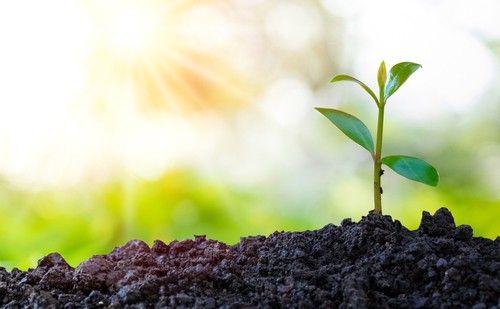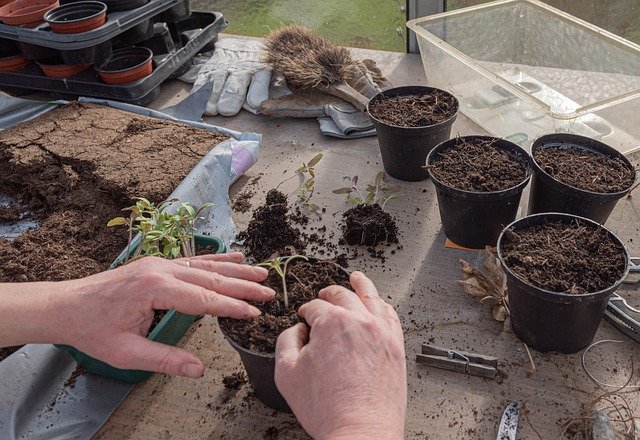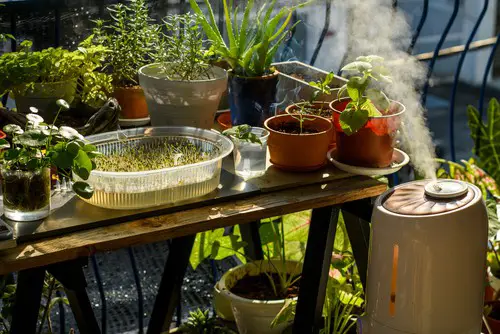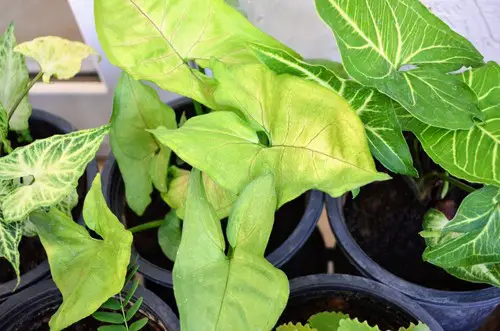Arrowhead plants, also known as Syngoniums, are a popular houseplant that can add a touch of greenery to any room. However, if you notice your arrowhead plant falling over, it can be a cause for concern. There are several reasons why an arrowhead plant may start to droop or fall over, but with the right care, you can help your plant thrive.
One of the most common reasons why an arrowhead plant falls over is due to lack of support. These plants have soft stems that can’t support their weight as they grow taller.
Another reason could be improper watering, which can cause the plant to become too heavy and fall over. Additionally, insufficient light and lack of pruning can also cause arrowhead plants to become leggy and fall over.
Understanding the reasons why your arrowhead plant is falling over is the first step in helping it recover. With proper care and attention, you can help your arrowhead plant thrive and prevent it from falling over in the future.
In the next sections, we will explore the different causes of falling over and provide tips on how to prevent it from happening.
Key Takeaways
- Arrowhead plants are popular houseplants that can add a touch of greenery to any room.
- Lack of support, improper watering, insufficient light, and lack of pruning are common reasons why arrowhead plants fall over.
- Understanding the reasons behind falling over and providing proper care and attention can help prevent this from happening in the future.
Check out these other popular posts:
- Why Is My Arrowhead Plant Turning Brown?
- Why Is My Aloe Vera Turning Yellow?
- Why Is My Aloe Plant Growing Sideways?
Understanding Arrowhead Plant

Arrowhead plant, also known as Syngonium podophyllum, is a popular houseplant due to its attractive foliage and ease of care. It is native to tropical rainforests in Central and South America, but it is widely cultivated and grown as a houseplant in many parts of the world.
Arrowhead plant is a member of the Araceae family, which includes other popular houseplants such as peace lilies, pothos, and philodendrons. It is also known by other common names such as arrowhead vine, nephthytis, African evergreen, Florida holly, and Maria Allusion.
Arrowhead plant is a trailing or climbing vine that can grow up to several feet long. Its leaves are arrowhead-shaped, hence its common name, and can come in a variety of colors, including green, variegated, and pink. The plant is often grown in hanging baskets or trained to climb up a trellis or pole.
Arrowhead plant is a relatively low-maintenance plant that can thrive in a variety of light conditions, from bright, indirect light to low light. However, it prefers bright, indirect light and will grow more slowly in low light conditions. It also prefers well-draining soil and should be watered when the top inch of soil is dry to the touch.
Despite its easy care, arrowhead plant can sometimes fall over or droop, which can be a cause for concern for plant owners. This can be due to a variety of reasons, including lack of proper light, improper watering, insufficient nutrition, lack of pruning, and pest infestation.
Why is Your Arrowhead Plant Falling Over – 5 Common Problems
Arrowhead plants are popular indoor plants known for their arrow-shaped leaves. However, sometimes they can start to droop or fall over, which can be a sign of poor health. Here are some common reasons why your arrowhead plant may be falling over.
1. Overwatering and Underwatering
Overwatering or underwatering your arrowhead plant can cause it to fall over. Too much water can lead to root rot, which can cause the plant to wilt and fall over. On the other hand, not enough water can cause the leaves to droop and the plant to become weak.
To prevent overwatering, make sure the soil is well-draining and allow the top inch of soil to dry out before watering. To prevent underwatering, make sure the soil is consistently moist but not waterlogged.
2. Inadequate Light

Arrowhead plants require bright indirect light to thrive. If they are not getting enough light, they may start to droop or fall over. Direct sunlight can scorch the leaves, so it is best to place the plant in a bright but indirect light.
3. Improper Temperature and Humidity
Arrowhead plants prefer temperatures between 65 and 75 degrees Fahrenheit and moderate to high humidity levels. If the temperature is too cold or too hot, or if the humidity levels are too low, the plant may start to droop or fall over.
To maintain the proper temperature and humidity, keep the plant away from drafts and mist the leaves regularly.
4. Pest Infestation
Pest infestations, such as spider mites or mealybugs, can cause the plant to become weak and fall over. These pests can be treated with insecticidal soap or neem oil.
5. Disease and Nutrient Deficiency
Diseases and nutrient deficiencies can also cause arrowhead plants to fall over. Nutrient deficiencies, such as a lack of magnesium, can cause the leaves to yellow and the plant to become weak.
To prevent disease and nutrient deficiencies, make sure the plant is receiving proper care and nutrition. Use a general-purpose houseplant fertilizer and make sure the soil is well-draining.
By addressing these common issues, you can help prevent your arrowhead plant from falling over and keep it healthy and thriving.
Proper Care for Arrowhead Plant
Arrowhead plant is a beautiful indoor plant that requires proper care to thrive. Here are some important factors to consider when caring for your arrowhead plant.
1. Watering Needs

Proper watering is essential for the health of your arrowhead plant. Overwatering or underwatering can cause the plant to wilt and fall over. It is recommended to water your arrowhead plant when the top layer of soil is dry to the touch. Avoid letting the plant sit in standing water as it can lead to root rot.
2. Light Requirements
Arrowhead plant prefers bright, indirect light. Direct sunlight can scorch the leaves, while too little light can cause the plant to become leggy and weak. If your arrowhead plant is not receiving enough light, it may start to fall over.
3. Temperature and Humidity Preferences
Arrowhead plant prefers temperatures between 65-80°F during the day and above 60°F at night. It also thrives in high humidity environments. If the air is too dry, you may need to mist the plant or place a humidifier nearby to increase the humidity level.
4. Fertilizer Needs
Fertilizing your arrowhead plant is important to keep it healthy and growing. Use a balanced liquid fertilizer once a month during the growing season (spring and summer) and reduce it to once every two months during the dormant season (fall and winter).
Avoid over-fertilizing as it can lead to a buildup of salts in the soil, which can damage the plant.
5. Pruning and Support
Pruning your arrowhead plant is important to keep it looking neat and compact. You can trim back the stems and leaves to control the size and shape of the plant. If your arrowhead plant is falling over, you may need to stake it or provide support to prevent it from bending too much.
Proper care for your arrowhead plant includes regular watering, proper light, temperature, and humidity, fertilizing, pruning, and support. By following these guidelines, you can help your arrowhead plant thrive and prevent it from falling over.
Repotting and Propagation
When and How to Repot

Repotting an arrowhead plant is necessary when it outgrows its current pot or becomes root-bound. A root-bound plant has roots that have grown so much that they fill up the entire pot, making it difficult for water and nutrients to reach the plant.
Signs that your arrowhead plant needs repotting include roots growing out of the drainage holes, yellowing leaves, and stunted growth.
To repot an arrowhead plant, choose a pot that is one size larger than its current pot with drainage holes at the bottom. Fill the new pot with a well-draining potting mix, leaving enough space at the top for the plant.
Carefully remove the plant from its old pot, loosen the roots, and place it in the new pot. Fill the gaps with additional potting mix, leaving about an inch of space at the top. Water the plant thoroughly, and place it in a spot with bright, indirect light.
Propagation Techniques
Propagating an arrowhead plant is an easy and cost-effective way to create new plants. There are two main propagation techniques: water propagation and soil propagation.
To propagate using water, cut a stem with at least two leaves and place it in a jar of water, making sure that the bottom of the stem is submerged. Change the water every few days, and wait for roots to grow before transferring the plant to soil.
To propagate using soil, cut a stem with at least two leaves and dip the cut end in rooting hormone. Plant the stem in a pot filled with well-draining potting mix, and water it thoroughly.
Cover the pot with a plastic bag to create a humid environment, and place it in a spot with bright, indirect light. Wait for roots to grow before removing the plastic bag.
Propagation can also be done by dividing a root-bound plant. Carefully remove the plant from its pot, and gently separate the roots into two or more sections. Plant each section in a pot with well-draining potting mix, and water thoroughly.
It is important to note that propagating a plant with root rot will only result in more plants with root rot. Therefore, it is crucial to make sure that the parent plant is healthy before propagating.
Preventing Arrowhead Plant from Falling Over

Arrowhead plants are beautiful and easy to care for, but they can become top-heavy and fall over if not cared for properly. Here are some tips to prevent your arrowhead plant from falling over:
1. Watering
Overwatering or underwatering can cause your arrowhead plant to fall over. Make sure to water your plant when the top inch of soil feels dry to the touch. Avoid letting the plant sit in standing water, as this can lead to root rot and other issues.
2. Light
Arrowhead plants need bright, indirect light to thrive. If your plant is not getting enough light, it may become weak and fall over. Make sure to place your plant near a window that receives bright, indirect light, or use artificial grow lights to supplement natural light.
3. Temperature and Humidity
Arrowhead plants prefer warm, humid environments. Keep your plant away from drafts and cold temperatures, as this can cause stress and weaken the plant. You can increase humidity by misting the plant with water or placing a tray of water near the plant.
4. Pruning
Regular pruning can help keep your arrowhead plant healthy and prevent it from becoming top-heavy. Trim back any long, leggy stems and remove any dead or yellowing leaves. This will encourage new growth and help the plant maintain a more compact shape.
5. Staking and Support
If your arrowhead plant is already leaning or falling over, you can use a stake or support to prop it up. Gently tie the plant to the stake or support with soft string or twine, being careful not to damage the stems or leaves.
6. Fertilizing
Arrowhead plants benefit from regular fertilization, especially during the growing season. Use a balanced, water-soluble fertilizer every two weeks to provide the plant with essential nutrients.
7. Pest Infestation and Disease
Pest infestations and disease can weaken your arrowhead plant and cause it to fall over. Keep an eye out for common pests like spider mites and mealybugs, and treat any issues promptly with insecticidal soap or neem oil. Avoid overwatering, as this can lead to fungal infections and other diseases.
8. Nutrient Deficiency

If your arrowhead plant is not getting enough nutrients, it may become weak and fall over. Make sure to fertilize regularly and provide the plant with a balanced diet of nitrogen, phosphorus, and potassium.
If you suspect a nutrient deficiency, you can use a soil test kit to determine which nutrients are lacking and adjust your fertilization accordingly.
Frequently Asked Questions
How to stake an arrowhead plant?
Staking an arrowhead plant is a simple process. First, you need to choose a sturdy stake that is taller than the plant. Then, gently tie the plant to the stake with soft twine or plant ties. Be careful not to tie the plant too tightly as this can damage the stem.
How to prune an arrowhead plant?
Pruning an arrowhead plant is important to keep it healthy and looking its best. To prune, simply use a clean pair of pruning shears to cut off any dead or yellowing leaves. You can also trim back any leggy stems to encourage new growth.
What’s wrong with my arrowhead plant?
If your arrowhead plant is falling over, it could be due to a number of reasons. The most common causes are lack of proper light, improper watering, insufficient nutrition, lack of pruning, and pest infestation.
To determine the exact cause, you may need to examine the plant closely and make adjustments to its care routine.
How do you fix a droopy arrowhead plant?
To fix a droopy arrowhead plant, you first need to identify the cause. If the plant is drooping due to lack of water, give it a good drink and make sure the soil is moist but not waterlogged.
If the plant is drooping due to overwatering, allow the soil to dry out before watering again. If the plant is drooping due to lack of light, move it to a brighter location.
How do I get my arrowhead plant to stand up?
If your arrowhead plant is falling over, you can use a stake to prop it up. Follow the steps outlined in the “How to stake an arrowhead plant?” section above.
Do arrowhead plants need support?
Arrowhead plants can benefit from support, especially if they are top-heavy or have long, leggy stems. Staking the plant can help it stay upright and prevent it from falling over.

Hey, I’m Lisa and I’ve been an avid gardener for over 30 years. I love writing, talking and living in the garden! Feel free to connect with me on my socials below


